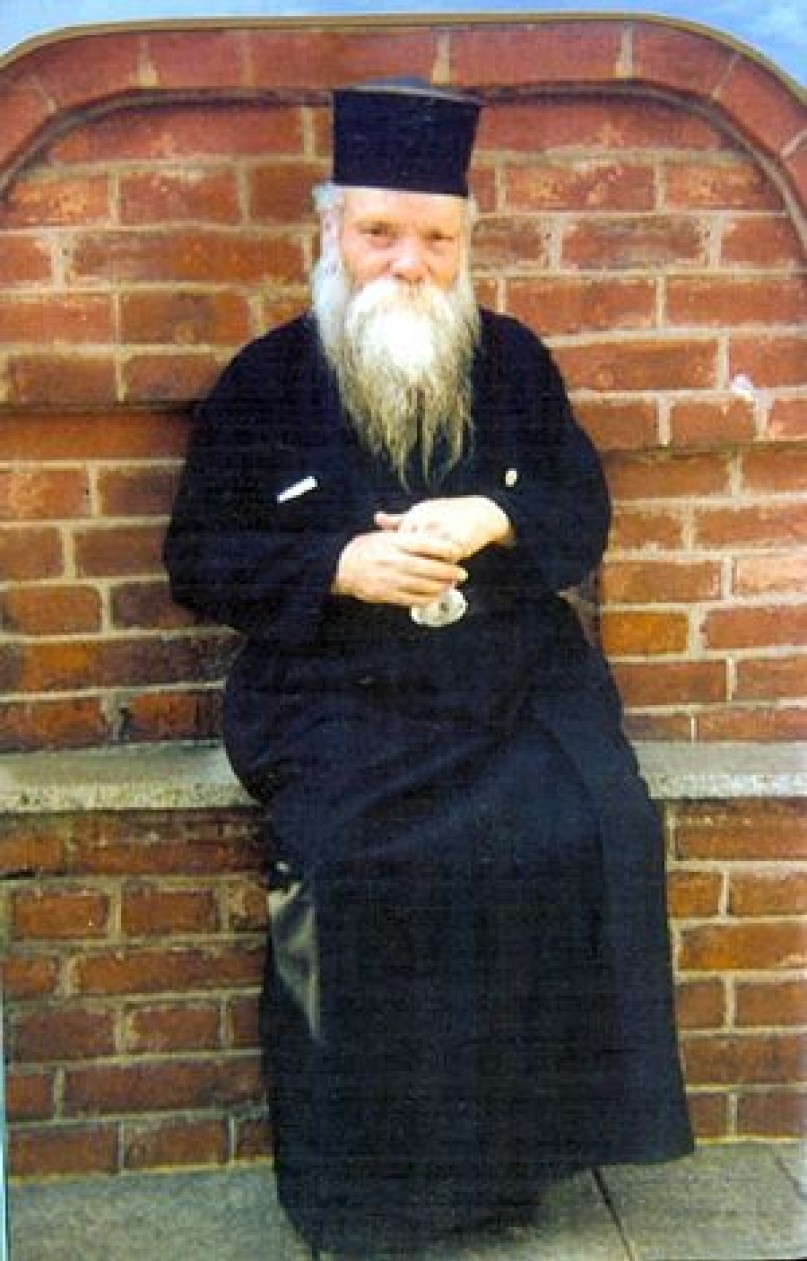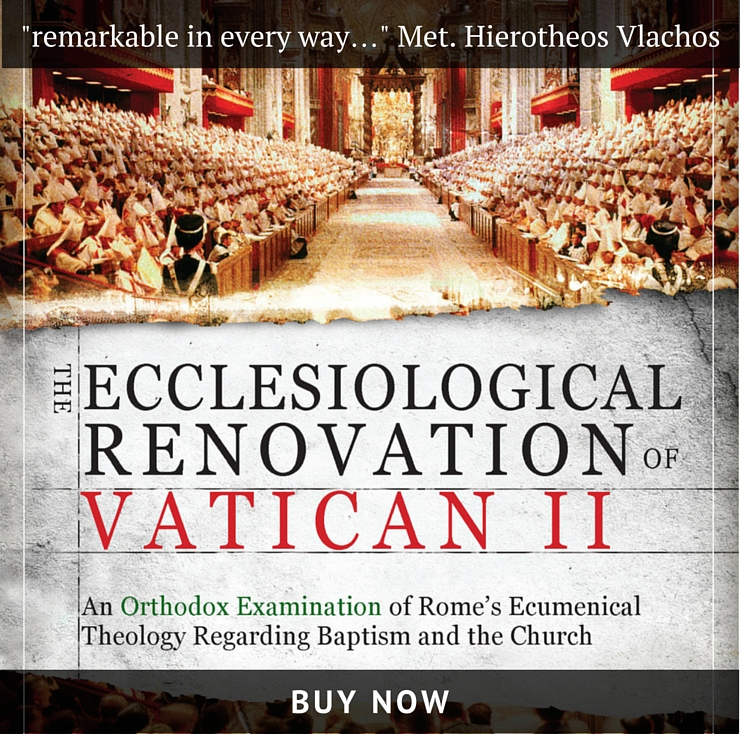Full english translation expected 2023, Uncut Mountain Press
Although St. Porphyrios recommended that I should go to Elder Iakovos because I was in a rush to solve the problem of not having a confessor, I went to another man of God, Elder Evmenios Saridakis the Leper (1931-1999) from Ethia in Monofatios, Heraklion, Crete. Elder Evmenios, who himself was a leper, served at the leper colony of Athens and was instructed by St. Nikiphoros the Leper with whom he was close. I established a close, almost parental, spiritual relationship with Elder Evemnios as he helped me understand how a humble person lives in the world with true repentance and holiness. I learned his own monastic freedom [1] and experienced the life of a holy person who dedicated his life to the service of lepers, living behind bars, isolated from the rest of the world. Everyday Elder Evmenios would do all of the services sometimes taking up to five hours. Many people would tell him, “You are the new Fr. Nicholas Planas!” [2] and he would reply, “Bah! He was a saint. I am not a saint.” He served others all day, comforting them, taking care of them, not only the lepers but he would go to the homes of many people that would call on him to do supplicatory canons and holy unction services.
Elder Evmenios was a hero and secret saint of Athens who kept his gifts hidden from others [3]. St. Porphyrios remarked to me about Elder Evmenios one time, “He is a saint. He prays to God that he not be revealed to others but only at the end of his life will it be revealed.”
The Picture of St. Anthimos of Chios
In the cell of Elder Evmenios, above the bookshelf, the Elder had a picture of another elder that I always noticed. One time I asked Elder Evmenios who was in the picture he replied, “Fr. Anthimos.” I noted, “It seems to me like he must be someone very important to you.” He replied simply, “For my Elder, Fr. Nikophoros, he was an important person.” So the matter was closed for me.
One day I went into Elder Evmenios’ cell and I noticed that the picture of Fr. Anthimos had disappeared. “Huh! Where did that picture of Elder Nikiphoros’s elder go?” I asked, noticing that it was not in its usual spot. Elder Evmenios replied to me curtly, “Don’t ask! Don’t be so curious!” His answer did not satisfy my curiosity and it continued to bother me and I thought, “He had that picture in his cell for so many years and now that it has disappeared he won’t even tell me why or give me a reason.” The next time I had the chance to go up to the leper’s sanatorium I remarked to Mr. Aristides of blessed memory, a very kind man, “The picture of Fr. Anthimos is missing from the cell of the Elder!” He replied, “Don’t you know? Fr. Theoklitos Dionysiatis just published a book that presents all of the details of Fr. Anthimos’ life showing that he was really a holy person. The Elder does not want people to know that he had any relationship with a saint!”
Then I understood that people of God keep themselves hidden and do not want to appear that they have any relationship with other people of God, whose holiness becomes known throughout the world attracting people who run to them to taste the sweetness of this holiness. The holiness of St. Anthimos was well known and became recognized by the Ecumenical Patriarchate who now celebrates his feast on February 15.
For anyone to understand and perceive the character and extent of someone’s holiness who keeps themselves diligently hidden, one must really search his or her past - especially his spiritual roots - to find where a particular person’s struggle for repentance begins, where a person’s journey towards a life in Christ begins. For example, in the previous example we have an unbroken chain of holiness: Behind the sanctity of Elder Evmenios Saridakis is the holiness of Elder Nikiphoros the Leper. Behind Elder Nikiphoros is found the holiness of the venerable Anthimos of Chios, the father of lepers, and behind him we meet the holy person of St. Pachomios of Chios, who besides St. Anthimos was the spiritual father of St. Nektarios of Pentapolis. In this way we can better understand the charismatic spirituality of Elder Evmenios by referring first to his spiritual root, the revered person of venerable Nikiphoros the Leper.
St. Nikiphoros’ Move to Athens and St. Anthimos’ Letter to Elder Evmenios
St. Nikiphoros stayed close to St. Anthimos until 1957. He was now a mature monastic with a high spiritual life but his body was in a very bad physical state. He had to be transferred to the lepers colony of St. Barbara in Athens for special care because he was already blind and was slowly becoming paralyzed.
When the saint arrived at the Lepers Colony of Athens, Elder Evmenios was there to greet him, having already received a letter from St. Anthimos who had written to him:
“Fr. Sophronios [4] - Panagia is sending you a treasure. He is still a novice monk, but he is like unto the most perfect monk. He will teach you the sure path of the saints. Serve him, and whatever gifts of the Spirit he has, God will also grant to you.”
St. Anthimos was trying to show the monk Sophronios that he should take care and nurse a saint so that he could inherit these spiritual gifts. From that moment, Fr. Sophronios (the future Elder Evmenios) received the leper and blind monk Nikiphoros. He was his nurse, his cook, the person who bathed him, who helped him put on his shoes, who guided him to church, who directed him to the chanter’s stand - he was his left and right hand, his feet and his eyes. He was obedient to him in all things, understanding that God had sent him an angel to teach him the spiritual life. One day Elder Evmenios shared with me privately, “You know my son, I had to leave my monastery in Crete at such a young age that I did not have anyone to teach me about the spiritual life. I deeply wanted someone to teach me about inner prayer, to teach me specific ways of repentance. In response God sent me Elder Nikiphoros.”
--------------------------------------------------------------
Citations
[1] Elder Evmenios maintained a strict interior monastic life but was always ready to serve others: to visit people with AIDS, to pray in homes, and to be with people. He was not quiet and reserved but his self-mastery allowed him a certain freedom as St. Paul writes, “Where the Spirit of the Lord is, there is freedom.” (2 Corinthians 3:17).
[2] St. Nicholas was known for his long services full of compunction and reverence.
[3] Like many people before him, Elder Evmenios did not hide his gifts as one puts a lamp under a bushel but to escape the praise of men (Matthew 6:1). In God’s time these works come to light shining before us men so that we may praise our Father in heaven (Matthew 5:16).
[4] That was his name at the time - when he was ordained a priest he was given the name Evmenios.




Please be kind, lest your comment go the way of Babylon.